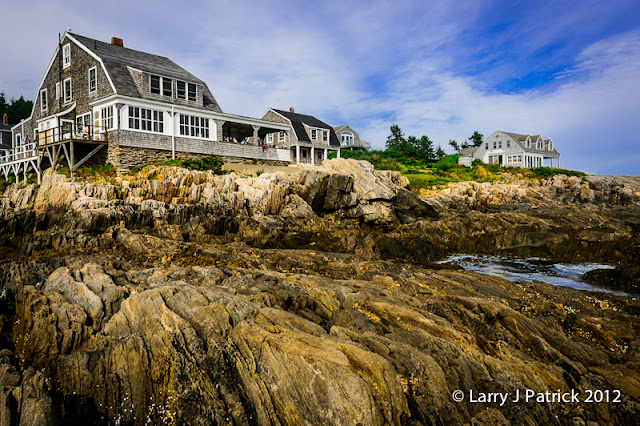On our vacation, almost every morning started the same. I would roll out of bed about my normal time (4:30 to 5:30) and head out to do some shooting before JD graced the world, usually around 7:30. Generally, I would head down to the dock area to photograph the lobster and fishing boats. I liked the harbors because they seemed genuine and real. As I looked at the harbors and the boats in them, I always got the same feeling—they seemed old, worn and tired, but still up to the task.
In today’s photo, the fog (which
was a constant every morning) had lifted to the top of the roofs of the
buildings. As a result, you had
this splash of worn colors of the buildings and boats framed by the defused colors
of the trees and sky and the muted and abstracted colors and shapes of the
reflections in the water. I really
liked this contrast and tried to capture it the best that I could.
Enjoy.
Camera settings: Nikon D4, 28-300mm f/3.5~5.6 with polarizing filter
attached at 78mm, ISO 100, f/8 at 1/8th of a seconds on a tripod.
Post Processing:
Lightroom 4—applied Landscape preset
during import, cropped the image, set white and black points, increased
contrast, saturation and clarity of the boats and buildings with an adjustment
brush.






